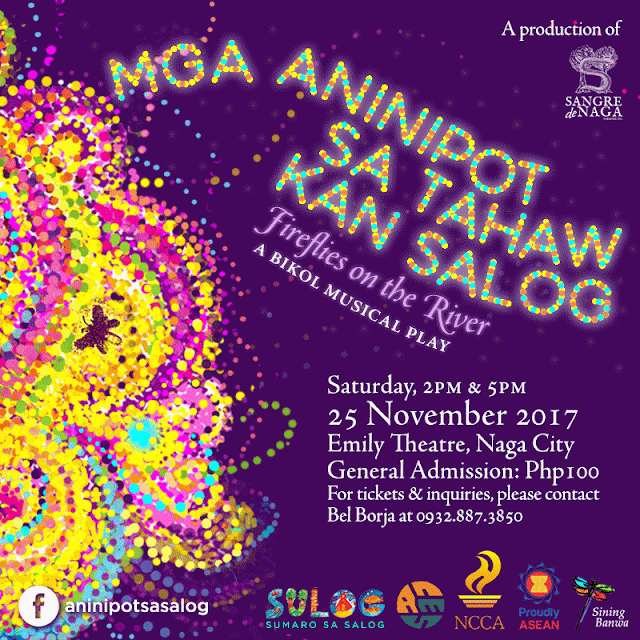Real (in defense of the Bikol writers)
IN Alec Santos’ feature article last week, “Bikol Oral Narrative—surviving the odds,” we were informed of the exemplary efforts of Ateneo de Naga University professor Dr. Cyril Conde in preserving Bikol oral literature. In this case, these ancient folktales leave the ever-threatened circumstance of our oral tradition to finally find its way to the pages of a published literature. What Dr. Conde does is similar to the tedious yet rewarding wanderings of Wilhelm and Jacob Grimm that produced for the world an anthology of folk tales that delighted generations since the Brothers Grimm published it in 1812. Indeed, efforts such as this are very much needed today, which Mr. Santos described as a situation “where reality is nothing more than the daily grind of life.” Tracing back our traditions to its possible earliest period and acquiring something from it for the sake of learning and preservation allow us to understand more ourselves as a people and as a culture.
Quite interesting and actually wonderful to think about was the oral literary contest which Dr. Conde’s group initiated on May 19 in Villaflorida, Ocampo, Camarines Sur. I wasn’t able to attend the event, but I can just imagine how exciting it would be to witness local folks contest each other in telling stories intimate to our culture and personal experiences. Imagine the wit and utter display of our very own philosophies in the numerous stories, legends, myths, and other folk tales of Bikol. Dr. Conde’s efforts actually assure for our children the great opportunity of the joy of reading the stories our forebears themselves created. These stories, as artifacts of our culture, provide for us a rich material where we can acquire our own sense of Bikol-ness.
I remember my father narrating to me as a child the tales of Juan Tiñoso, who I have learned later that he was also the same character of a more indigenous name of Juan Osóng. The Juan Tiñoso stories were among the tales I grew up with. They were among my first kickoff points toward greater curiosity. Up to this day, nobody really knows where these Juan Osóng came from. Nobody knows if Osóng is an indigenized Tiñoso or that the latter is actually a Hispanic version of the former. Literary historians could only make conjectures. Regardless of such confusions, these stories need to be documented and archived. And we are fortunate to have a devoted scholar in the person of Dr. Cyril Conde.
But while Dr. Conde’s outstanding literary research is really worth emulating, Mr. Santos’ way of ending his article was irresponsible and quite unfair to the contemporary Bikolano writers. Everything was admirable until his dicto simpliciter in the last sentence: “In an age where modern Bikolano literature is nothing more than the creation of egoistic urban writers (which I will not name), it is good to know that REAL literature still exists in our land.”
What is modern Bikol literature in the first place? Is it really modern? If Mr. Santos refers to the contemporary Bikol literature, then he should be more aware that contemporary literary works comprise only a few pages in the thick compendium of Bikol literary creations. Contemporary writers never claim ascendancy over Bikol literature. In fact, we never fail to recognize the influence on us of the past as well as the present-day culture that we have. Mr. Santos could have instead named who these ‘egoistic urban writers’ are so that we could have just talked to them as colleagues. Not naming them brought forth vagueness, which means anyone if not all of us could be full of ourselves. This is unfair because no Bikolano contemporary writer today really earns from writing, not even our colleagues who have published books. They write for passion, they write for Bikol, despite not getting recognized. Bikol literature is still making its way to be formally thought in the classrooms, and Bikolano writers are laboring hard for this; neither for prestige nor wealth, but just so that Bikol literature lingers in the consciousness of the next generations. It is quite unfair to them to be cheap shot without deeply looking into the real worth of what they do.
Much more, I think it was thoughtless and lacking in discernment to discriminate the contemporary literary works as NOT REAL literature. What then is REAL? Mr. Santos should have looked more closely into the contemporary works where traces of oral narratives—REAL literature according to him—are very much visible. We do not set indigenous literature aside. Rather, we are also in search of it. We want to put constancy to it in our artworks. In our hearts is a Bikol literature formed and shaped along the course of history. We are in a period where post-colonial hunger for everything pre-colonial is deep. While we turn to the past and get inspired by its wonder, we live and write in a world of a different circumstance. There are many good contemporary Bikolano writers, writers who never get known, writers who write well for the sake of writing. To call their works as NOT REAL literature is a great blunder.


Comments